Growing oregano is a great way to add flavour to your cooking. From Italian and Greek dishes to Mexican and South American dishes, this versatile herb has been used for centuries.
But if you’re just getting started with growing oregano, you may be wondering how long it takes for the herb to mature from seed or plant.
The answer to that question depends on a few factors such as the type of oregano you’re growing, the climate conditions, and how well you care for your plant.
In this guide, we’ll discuss all things related to oregano growth so you can successfully grow this flavorful herb in your garden.
Cultivation and History
Oregano has been cultivated for centuries and is native to the Mediterranean region. It’s most commonly used in Italian, Greek, Mexican, and South American cuisine.
When growing oregano in your garden or pots at home, you have the choice of either starting from seed or buying a plant. The benefit of starting from seed is that it’s cheaper and more rewarding to watch your herb grow over time.

On the other hand, if you don’t have the patience or time to wait for the seeds to germinate, you can always purchase a young oregano plant at your local nursery.
Propagation
Starting oregano from seed is a relatively simple process. First, you’ll want to get a pot or container that has good drainage. Fill the pot with nutrient-rich soil and scatter the seeds on top of the soil.
Lightly cover the seeds with a thin layer of compost or vermiculite and water thoroughly until evenly moist.
How to Grow Oregano
Now that you’ve got the seeds planted, it’s time to start growing your oregano. The herb prefers well-draining, nutrient-rich soil and full sun—at least four or five hours per day. During the summer months, water your plant once or twice a week; in winter, you can reduce watering to once every two weeks.
When the seedlings have grown several inches tall, you can thin them out and transplant any crowding plants into separate pots.
Oregano can be planted directly outdoors after the last frost in late spring or early summer (depending on your climate). Make sure to give each plant plenty of room—about 20-24 inches apart—and plenty of sunlight.
Quick Reference Growing Guide
- Start from seed or buy a young oregano plant
- Plant in well-draining, nutrient-rich soil
- Place pot or container in an area with full sun (at least four to five hours per day)
- Water once or twice a week during summer months, and once every two weeks during winter months
- Thin out seedlings and transplant any crowding plants into separate pots
- Plant outdoors after last frost in late spring or early summer (depending on your climate)
- Give each plant plenty of room—about 20-24 inches apart
Growing Tips
Oregano is a hardy herb that is relatively easy to grow. However, there are a few tips that can help you get the best possible yield:
- Harvest oregano in the morning after dew has dried but before the heat of the day sets in. This helps preserve its flavour and essential oils.
- Oregano leaves can be harvested when the plant is 6-8 inches tall.
- To keep your oregano plants growing, trim them back to about 6 inches each spring and fertilise with organic compost or fish emulsion.
- Oregano can become woody over time as it matures which reduces its flavour. To prevent this, pinch off any flower stems and divide the plant every few years.
Cultivars to Select
When selecting oregano for growing in your garden, it’s important to choose a variety that suits your needs.
Managing Pests and Disease
Oregano is generally resistant to pests and diseases. However, aphids and other insects can sometimes be a problem. To keep these critters away, make sure your plants get enough sun and water when needed. If you notice an infestation of pests, spray the plant with a mixture of water and dish soap or neem oil.
You may also want to inspect your oregano plants for powdery mildew and other fungal diseases. If you notice any signs of disease, remove the affected leaves immediately and treat with a fungicide.
Harvesting and Storing
When your oregano is six to eight inches tall, you can start harvesting the leaves. Be sure to use clean scissors or kitchen shears when cutting so you don’t spread any disease.
Oregano leaves are best used fresh but they can also be dried or frozen for future use. To dry the herbs, hang a bundle of stems upside down in a dark, dry space.
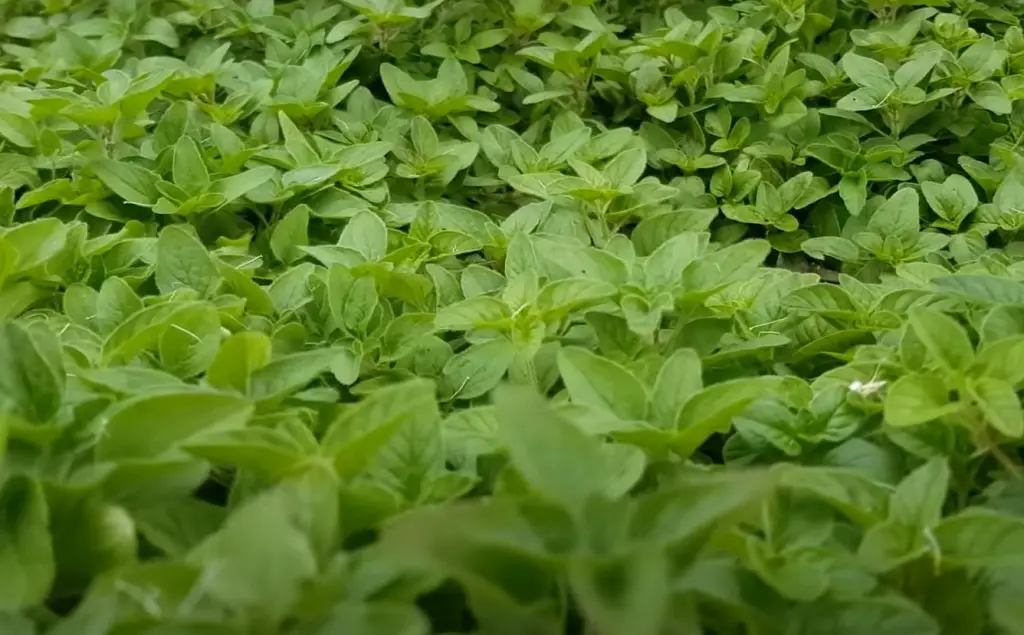
Once the leaves are completely dried out, strip them off the stems and store in an airtight container.
Preserving
Oregano is a flavorful herb that can bring a lot of life to any dish. To preserve its flavour, be sure to harvest it in the morning after dew has dried off but before the heat of the day sets in.
This helps preserve its essential oils and flavour compounds. You can also pinch off any flower stems as they appear so your oregano doesn’t become woody.
Recipes and Cooking Ideas
Fresh oregano is a great addition to many dishes. Try adding it to your favourite pasta sauce or pizza for extra flavour, or use it in salads and marinades for an herby kick. You can also add some fresh oregano to soups and stews for a subtle, savoury taste.
Another popular way to use oregano is to make an herb oil or butter. Simply mix some chopped oregano leaves with olive oil or melted butter and let it sit for a few hours before using. This infused oil can be used to flavour salads, meats, vegetables, and more.
FAQ
Does oregano grow quickly?
Oregano takes between two to four weeks after planting for the seeds to germinate, and then grows quickly once established. The plant can reach full maturity in about two months or so.
Can I grow oregano indoors?
Yes, oregano can be grown indoors as long as you provide enough sunlight (at least four to five hours a day) and well-drained, nutrient-rich soil. It’s best to start with young plants rather than seeds so you don’t have to wait for them to germinate.
Is oregano easy to grow?
Yes, oregano is fairly easy to grow if given the proper care. Make sure to plant in well-draining soil and provide the plants with enough sunlight (at least four to five hours a day). Water when necessary and pinch off any flower stems as they appear.
How to grow oregano fast?
To grow oregano fast, start plants from seed or buy a young plant and transplant into well-draining, nutrient-rich soil. Place the pot in an area with full sun (at least four to five hours per day), water regularly, and thin out any seedlings that are crowding each other.
For best results, harvest leaves in the morning after the dew has dried and remove any flower stems that appear.
How long does it take for oregano to start growing?
It usually takes two to four weeks after planting for oregano seeds to germinate and begin growing. Once established, the plant can reach full maturity in about two months.
Is oregano a slow grower?
No, oregano is not a slow grower; in fact, it grows fairly quickly once established. It usually takes two to four weeks after planting for the seeds to germinate and then reaches full maturity in about two months.
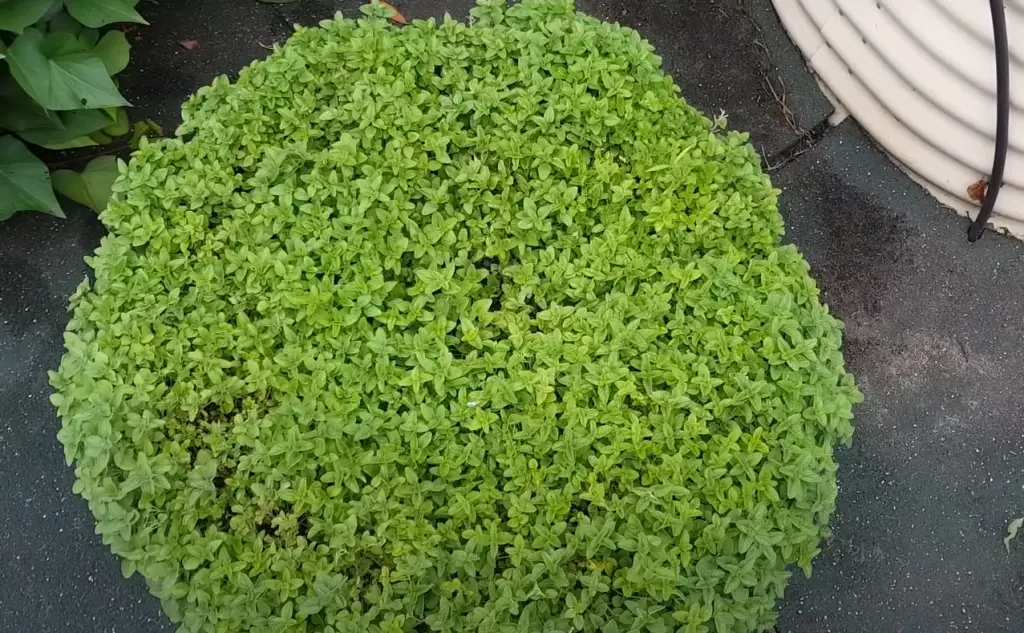
To get the best yield possible, make sure your plants have enough sunlight (at least four to five hours per day) and well-drained, nutrient-rich soil.
What month is best to grow oregano?
The best time to plant oregano is in late spring or early summer, after the last frost. This will give your plant enough time to mature before the first frost of fall.
When should I harvest my oregano?
Oregano leaves can be harvested when the plants are six to eight inches tall. Make sure to do so in the morning after dew has dried but before the heat of the day sets in. This helps preserve its flavour and essential oils.
Where is the best place to grow oregano?
Oregano likes full sun, so an ideal spot for growing it would be a south-facing window or outdoor area that gets at least four to five hours of sunlight per day.
Make sure the soil is well-drained and nutrient-rich.
What care is needed for oregano?
Oregano needs plenty of sun and water, plus well-drained, nutrient-rich soil. Pinch off any flower stems as they appear to keep your oregano from becoming woody.
Monitor for pest or disease issues and treat immediately if necessary. Harvest leaves in the morning after the dew has dried but before the heat of the day sets in.
What is the best way to store oregano?
Fresh oregano leaves can be stored in an airtight container in the refrigerator for up to a week.
Oregano can also be frozen or dried for future use. To dry, hang a bundle of stems upside down in a dark, dry space and strip off leaves once fully dried out. Store these in an airtight container.
What are some recipes that use oregano?
Fresh oregano is a great addition to many dishes. Try adding it to your favourite pasta sauce or pizza for extra flavour, or use it in salads and marinades for an herby kick. You can also add some fresh oregano to soups and stews for a subtle, savoury taste.
What health benefits does oregano have?
Oregano is a source of antioxidants and has anti-inflammatory properties. It can also be used to treat respiratory problems, boost the immune system, and improve digestion. Studies have also shown that oregano can help reduce cholesterol levels in the blood. Oregano oil, which contains higher concentrations of compounds found in the fresh leaves, can be used to help treat fungal infections and skin conditions.
How many calories are in oregano?
One tablespoon of fresh oregano contains only one calorie.

Dried oregano, however, contains more calories due to its higher concentration of essential oils and active compounds. One teaspoon of dried oregano contains four calories.
How can I make oregano oil?
Making oregano oil is incredibly easy. Simply mix some chopped oregano leaves with olive oil or melted butter and let it sit for a few hours before using. This infused oil can be used to flavour salads, meats, vegetables, and more.
Can you eat raw oregano?
Yes, you can eat raw oregano. It has a slightly bitter and pungent flavour that works well in salads and many savoury dishes.
However, it’s important to remember that the potency of oregano increases when it is cooked; so if you’re using it for its medicinal properties, try infusing oregano oil or making an oregano tea.
How do you make oregano tea?
To make oregano tea, simply steep one tablespoon of dried oregano leaves in a cup of boiling water for 10 minutes. Strain and add honey or lemon for flavour.
This tea is said to help with indigestion, fight colds, and reduce inflammation. It can also be used as a mouth rinse to help fight gum disease.
Does oregano attract bees?
Yes, oregano is a popular herb for attracting bees due to its fragrant flowers and nectar-rich blooms. If you’re growing oregano in your garden, make sure to place it away from areas where people will be gathering and be mindful of the potential for bee stings.
Answers to common questions about oregano provide plenty of useful information for gardeners looking to cultivate this fragrant herb.
Do different varieties of oregano have different growth habits?
Yes, certain types of oregano grow differently than others. For example, Greek oregano (Origanum heracleoticum) is an erect variety that can reach up to two feet in height and spread out as wide as three feet.
In contrast, Italian oregano (Origanum x majoricum) is an upright, low-growing variety that typically reaches a height of only eight to twelve inches.
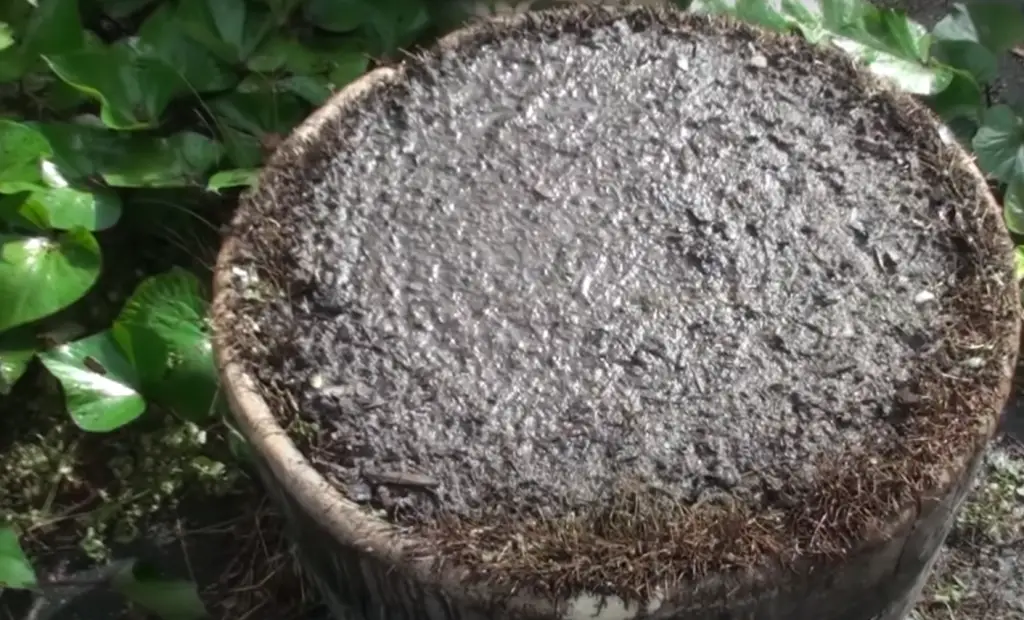
Knowing the growth habits of different varieties can help gardeners determine which type of oregano is the best fit for their garden.
Can I grow oregano indoors?
Yes, it is possible to grow oregano indoors in containers. Make sure to choose a spot that gets plenty of sunlight (at least four to five hours per day) and use a potting soil specifically designed for herbs.
You may also need to supplement with artificial light or grow lights for the plant to thrive indoors.
Can oregano be grown in water or as a hydroponic plant?
Yes, oregano can be grown in water with the help of a hydroponic system. This method is ideal for those who want to have a year-round supply of oregano as it allows the plants to grow in controlled conditions and doesn’t require soil or traditional gardening tools.
Keep in mind that proper lighting and nutrient levels are critical when growing herbs hydroponically.
Growing oregano is a great way to bring flavour and nutrition to your meals, as well as attractive blooms to your garden. With the right conditions and care, this popular herb can be enjoyed for years to come.
What are some other herbs that grow well alongside oregano?
Some other herbs that pair nicely with oregano in the garden include parsley, basil, chives, thyme, and rosemary. These herbs will not only bring flavour and colour to your garden but they can also help repel pests from your oregano plants.
In addition, growing them together can improve their growth as they benefit from each other’s nutrients and water levels.
Does pruning oregano affect its growth?
Yes, pruning can be beneficial for the overall health and growth of your oregano plants. Pruning encourages new growth and helps to keep the plant from becoming woody. Be sure to remove any dead or diseased parts of the plant first before trimming off any excess foliage as needed.
Do oregano plants need to be divided?
Oregano plants can become overcrowded, leading to poor air circulation and decreased growth.
To combat this, divide your oregano plants every two or three years by carefully digging up the root ball and replanting in separate containers. This will ensure that your oregano continues to thrive for many years to come.
Do oregano plants need full sun or partial shade?
Oregano prefers full sun, but it can tolerate some light shade if necessary. Make sure that the plants get at least four to five hours of sunlight per day for proper growth and flowering.
If your area gets particularly hot in the summer months, you may want to provide some light shade to help protect the plants from too much heat.
Growing oregano is a rewarding endeavour that brings flavour and nutrition to meals. With proper care and conditions, this fragrant herb can be enjoyed for years to come!
When should I harvest oregano?
Oregano should typically be harvested just before it begins to flower. Wait until the leaves are fragrant and have developed their signature flavour before harvesting.
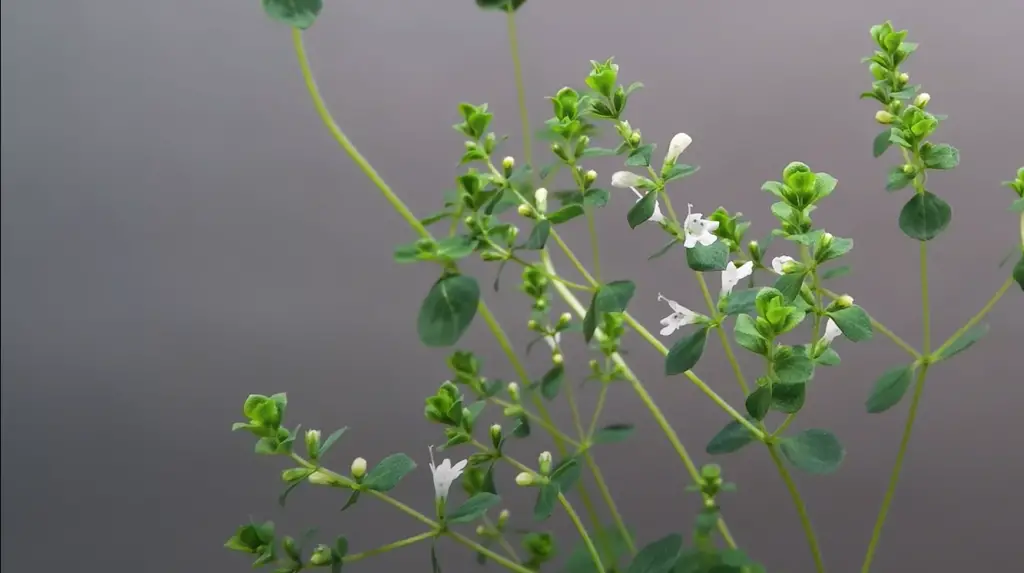
Don’t be afraid to pinch off some of the stem tips or use scissors if needed. You can also harvest oregano in late summer or fall for drying and storing.
Does oregano need to be fertilised?
Yes, oregano plants will benefit from occasional fertilising during the growing season. Choose a fertiliser specifically designed for herbs and use it according to package instructions.
You may also want to add some compost or aged manure to the soil in spring when you first plant your oregano. This will help give it the nutrients it needs for optimal growth.
Does oregano need to be watered regularly?
Yes, oregano plants should receive about an inch of water a week either through rainfall or manual watering.
If the soil is dry to the touch an inch below the surface, then it’s time to give your oregano some extra moisture. Avoid overwatering as this can lead to root rot and other issues.
Can oregano be grown in pots or containers?
Yes, oregano can easily be grown in pots or containers. Choose a pot with good drainage and fill it with quality potting soil. Place the container somewhere that gets at least four to five hours of direct sunlight per day and water regularly as needed.
Potted oregano is especially convenient for those who are short on space or who don’t have a traditional garden.
What type of soil is best for oregano?
Oregano prefers well-draining, loamy soil that contains plenty of organic matter. If you need to amend your soil to improve drainage, add some sand or perlite before planting.
Adding compost or aged manure to the soil prior to planting can also help provide extra nutrients for optimal plant growth.
What pests should I watch out for with oregano plants?
Common pests that may attack oregano plants include aphids, slugs, and snails. These can be kept at bay with natural pest repellents such as neem oil or diatomaceous earth. If the infestation is severe, you may need to use an insecticide to get rid of the pests.
Useful Video: Growing Oregano Time Lapse – Seed To Flower In 70 Days
Conclusion
Growing oregano is a rewarding experience that provides delicious flavour for homemade dishes and attractive blooms in your garden. While it does require some specific conditions and care, with the right information, you can have a thriving oregano plant in no time!
To summarise, oregano typically takes eight to twelve weeks to reach its full growth, but can be grown in water or as a hydroponic plant. It will benefit from companion plants such as parsley, basil, chives, thyme and rosemary, and should be pruned regularly for optimal growth.
Be sure to use potting soil designed for herbs and provide full sun or partial shade as needed. Additionally, fertilise your oregano periodically during the growing season and watch out for pests such as aphids, slugs, and snails. With these tips in mind, you’ll have a great oregano crop in no time!
References:
- https://gardenerspath.com/plants/herbs/grow-oregano/





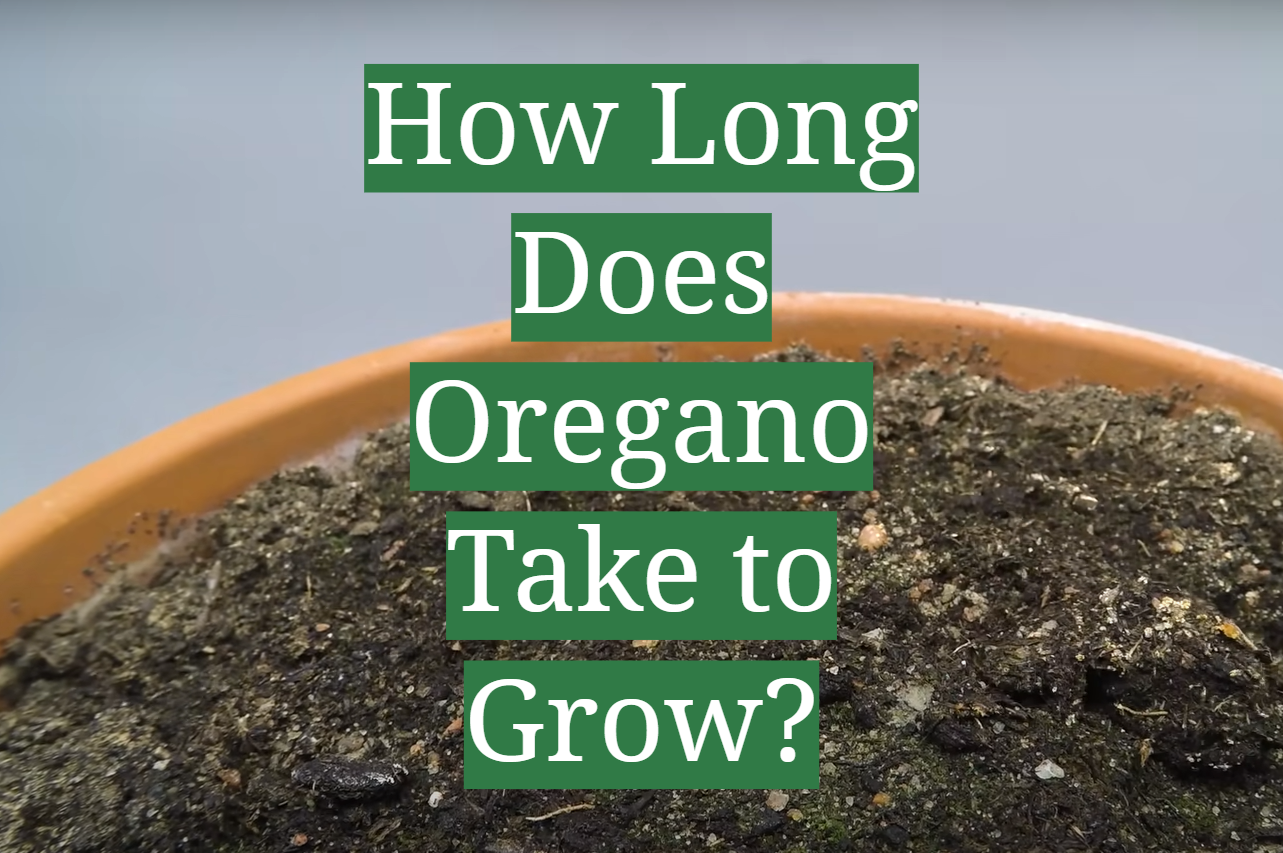




Leave a Reply
View Comments